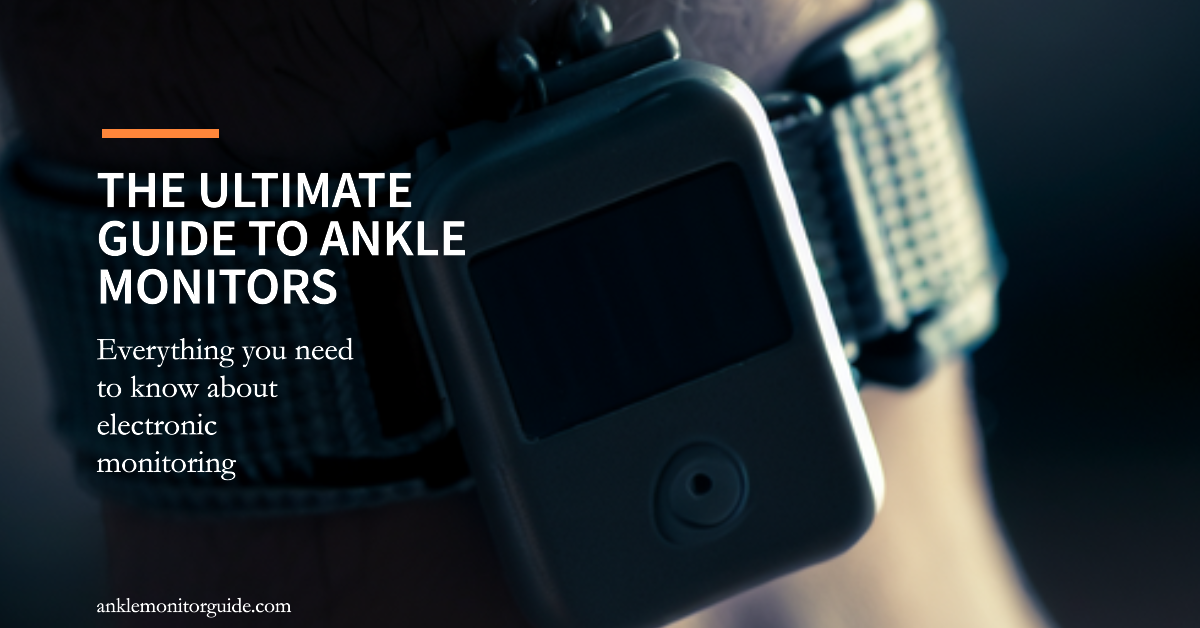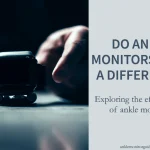In the dynamic world of law enforcement and criminal justice, ankle monitors have emerged as a game-changer, offering a fresh approach to keeping tabs on individuals. These seemingly ordinary devices, often the size of a wristwatch, are now playing a crucial role in monitoring individuals within the legal system. While ankle monitors might bring to mind spy thrillers or futuristic gadgets, their reality is both simpler and more intricate.
Ankle monitors are assuming an increasingly vital role amidst the evolving landscape of criminal justice. They represent a delicate equilibrium between personal freedom and community safety, offering individuals an alternative avenue to fulfill their obligations without being confined. Let’s uncover the layers of ankle monitors, exploring their mechanics, legal implications, effects, and overall effectiveness. This ultimate guide to ankle monitors seeks to empower you with insights, providing a comprehensive grasp of ankle monitors and their pivotal role in shaping the future of justice.
Ankle Monitors: A Glimpse into Modern Monitoring
Ankle monitors, also referred to as electronic monitoring devices, represent a pivotal evolution in how individuals are monitored within the legal system. They’re devices designed to track individuals, often giving them a chance to fulfill court orders, parole conditions, or pre-trial restrictions without the confines of a cell.
Ankle monitors go beyond mere tracking; they signify rehabilitation, reintegration, and a fresh perspective on what accountability means. Imagine ankle monitors as a bridge between freedom and responsibility. Let’s Dive In:
- How They Work: Ankle monitors are discreetly worn around the ankle and use GPS technology to keep tabs on a person’s whereabouts in real-time. It’s like an invisible string tying accountability to everyday life.
- Balancing Act: They allow individuals to navigate their routines while abiding by specific boundaries. It’s an effort to reintegrate into society while still being held accountable.
Demystifying Their Essence and Purpose
Picture donning an ankle bracelet, hidden from plain sight, yet harnessing the power of GPS technology to record your movements in real-time meticulously. That’s precisely how ankle monitors operate. They stand as the bridge that connects personal freedom with the need for accountability.
Decoding the Mechanics: How Ankle Monitors Operate
Ankle monitors might seem like magic, but there’s science behind them – a blend of technology and communication that keeps tabs on individuals.
- The GPS Factor: These devices tap into the Global Positioning System (GPS), a network of satellites that can pinpoint someone’s location accurately.
- Data Transmission: Location data is transmitted through cellular networks or other channels to monitoring centers, enabling real-time tracking.
- Monitoring and Analysis: Monitoring centers analyze the data received, ensuring compliance with set boundaries and conditions.
Navigating the Legal Landscape: Implications and Considerations
The use of ankle monitors isn’t just about the device; it’s about the rules, rights, and responsibilities that accompany them.
Balancing Accountability and Rights
- Unraveling the Legal Web: Different jurisdictions have their own set of rules governing when and why ankle monitors can be employed, ensuring a harmonious dance with the legal system.
- Walking the Tightrope: Legal systems master the art of striking equilibrium, aiming to shield public safety while preserving an individual’s rights, ensuring ankle monitors are a measured intervention.
A Glimpse into Privacy Conundrums
- Under the Watchful Eye: The constant monitoring inherent to ankle monitors brings forth debates about personal privacy and civil liberties, reminding us of the delicate balance at play.
- Navigating the Privacy Waters: Striking the right harmony between effective monitoring and safeguarding personal privacy is an endeavor that warrants profound contemplation.
Effectiveness and Controversies: Gauging Impact
Delving into the realm of ankle monitors brings us face-to-face with their real-world effectiveness and the resulting debates that ensue.
Ankle Monitors: Diving into Their Impact
The effectiveness of ankle monitors in reducing recidivism and encouraging compliance remains a subject of lively discussion. Supporters underline their potential to heighten accountability, constantly nudging individuals to meet their legal responsibilities.
Studies showcasing reduced reoffending rates under ankle monitor supervision lend weight to their effectiveness. However, some critics voice concerns that ankle monitors might address surface behavior while potentially sidestepping the deeper triggers of criminal conduct, possibly leading to longer-term recidivism.
Confronting Critiques and Contentions
The controversies encircling ankle monitors extend beyond their efficacy. Privacy worries emerge as continuous monitoring edges the line of personal freedom. The stigma attached to donning an ankle monitor can impede reintegration and amplify the hurdles individuals face in starting anew.
Moreover, the diverse outcomes of ankle monitor effectiveness, influenced by personal situations, the type of offense, and the presence of support systems, underscore the need for a comprehensive perspective on monitoring and rehabilitation. Amid this ongoing discourse, it’s crucial to appreciate the intricate role of these devices within the broader tapestry of the criminal justice landscape.
Selecting the Right Ankle Monitor: Key Considerations
Choosing an ankle monitor isn’t a one-size-fits-all affair; it involves a keen evaluation of multiple factors to ensure you find the right piece of tech that suits your needs.
- First, you need to determine whether GPS is enough or if you need additional features like alcohol monitoring. It’s like picking the perfect tool for the job.
- The device should be as comfortable as your everyday shoes. You want it to work without making you feel like you’re under a spotlight.
- The longevity of the device’s battery becomes paramount, as a reliable device ensures continuous monitoring without annoying interruptions.
In Conclusion: Navigating the Path of Understanding
As you traverse this comprehensive guide to ankle monitors, you’ve delved into the intricacies of ankle monitors, scrutinized their legal dimensions, evaluated their effectiveness, and equipped yourself with the wisdom to choose the right fit.
This guide serves as a gateway to the world of modern monitoring, where technology and law intersect. Armed with this understanding, you’re now poised to make informed decisions that matter. The journey doesn’t end here – brace yourself for forthcoming insights that further illuminate the path of ankle monitors, casting light on their potential and challenges alike. Keep exploring, keep questioning, and keep learning, for knowledge is the compass that guides you through this intricate terrain.








